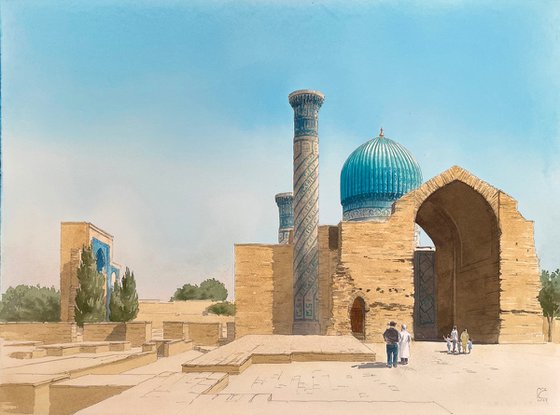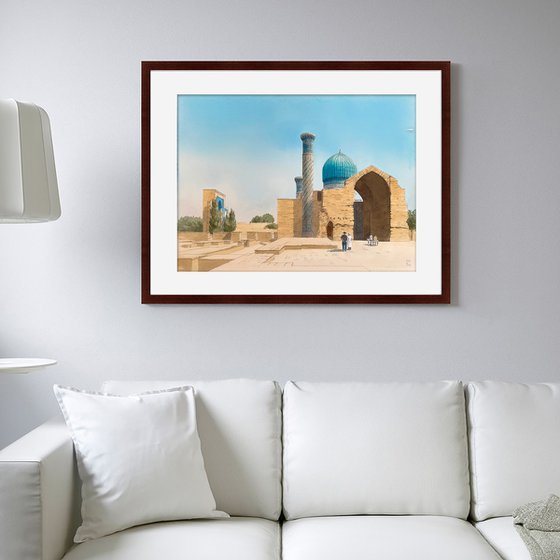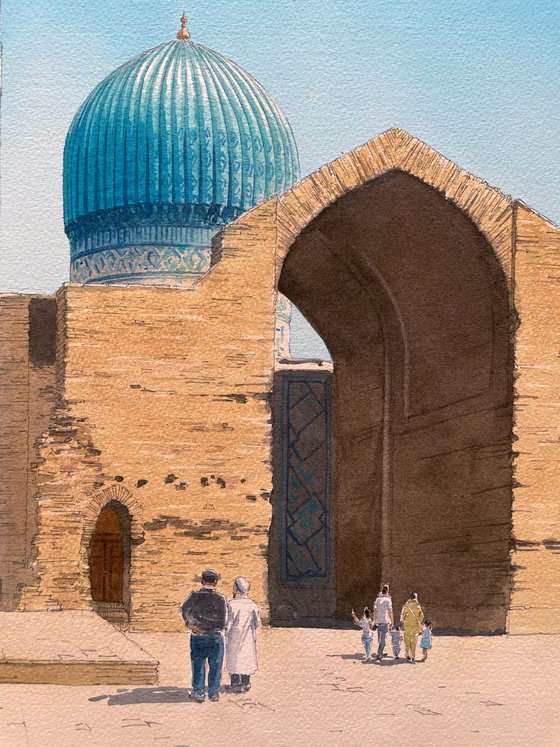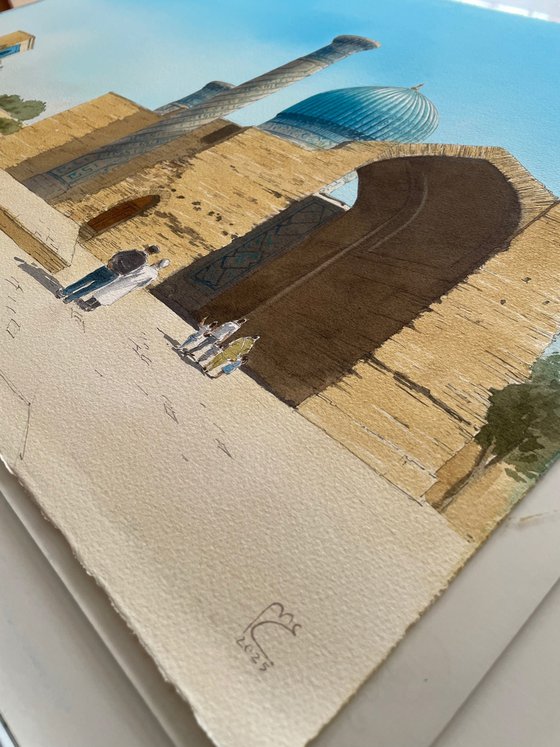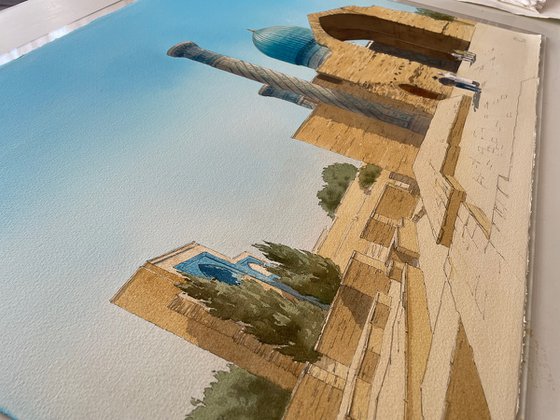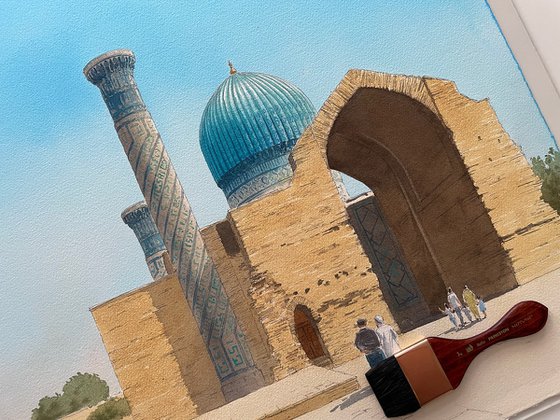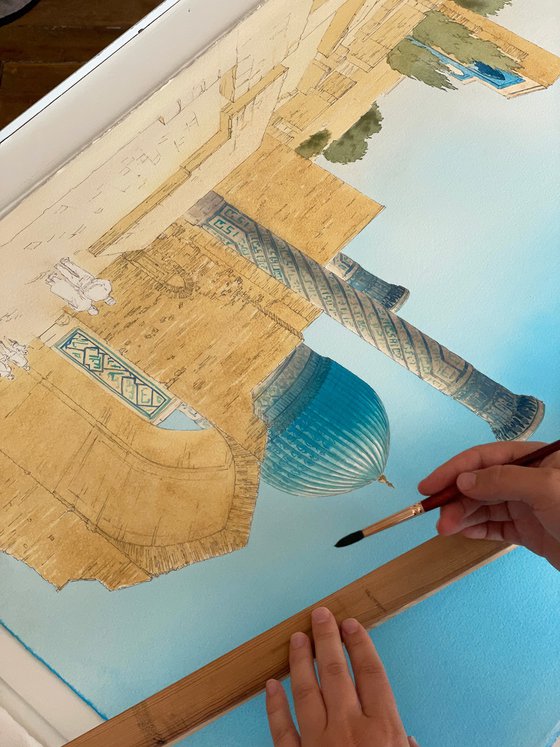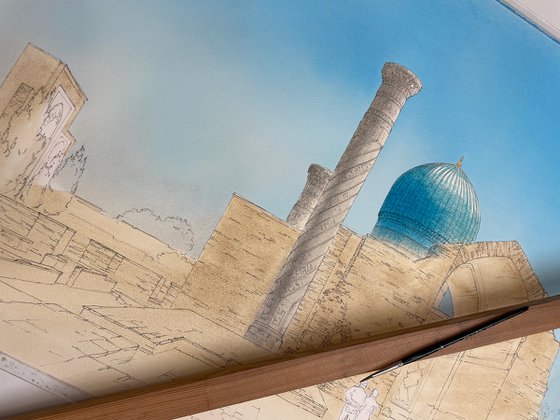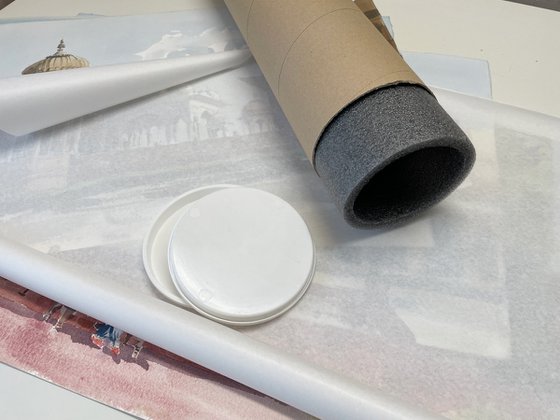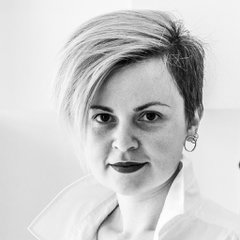Main Navigation
Original artwork description:
The Gur-e-Amir mausoleum and its tremendous beauty deserves to be painted on a whole paper size.
It's an icon of style, inspiring both Timur's descendants and architects of northern mosque in St. Petersburg.
The mausoleum is known not only for being the resting place of the conqueror of lands, Timur… his grandson, the astronomical luminary Ulugh Beg…
But also for one creepy story!
The beginning of the story, of course, is from of the legend. It's said that there's a Tamerlane’s curse, that if his dust is disturbed, the guilty will be punished by an horrific invasion…
But the true part of the story is that Soviet archaeologists opened Timur's tomb on June 21 in 1941.
The curse likely originated after that. But the symbolic extraction of the very Spirit of War right before the Barbarossa operation started - impressive. Some sources say that they returned Timur’s remains prior to the turning point in the Battle of Stalingrad.
By the way, the expedition established that Timur was tall, strong, red-haired, and indeed lame (Timur-e-Lang - Timur-a-lame).
Media: Watercolor on paper
Paper: Saunders Waterford , 300 g
Size: 56 x 76 cm (22 x 30 in).
Materials used:
watercolour
Tags:
#cityscape #islamic architecture #middle east #uzbekistan #eastern architectureGur-e-Amir, Uzbekistan (2025) Watercolour
by Eleanor Mill
£989.04
- Watercolour on Paper
- One of a kind artwork
- Size: 76 x 56 x 0.1cm (unframed) / 76 x 56cm (actual image size)
- Signed on the front
- Style: Photorealistic
- Subject: Architecture and cityscapes
Loading
Original artwork description
The Gur-e-Amir mausoleum and its tremendous beauty deserves to be painted on a whole paper size.
It's an icon of style, inspiring both Timur's descendants and architects of northern mosque in St. Petersburg.
The mausoleum is known not only for being the resting place of the conqueror of lands, Timur… his grandson, the astronomical luminary Ulugh Beg…
But also for one creepy story!
The beginning of the story, of course, is from of the legend. It's said that there's a Tamerlane’s curse, that if his dust is disturbed, the guilty will be punished by an horrific invasion…
But the true part of the story is that Soviet archaeologists opened Timur's tomb on June 21 in 1941.
The curse likely originated after that. But the symbolic extraction of the very Spirit of War right before the Barbarossa operation started - impressive. Some sources say that they returned Timur’s remains prior to the turning point in the Battle of Stalingrad.
By the way, the expedition established that Timur was tall, strong, red-haired, and indeed lame (Timur-e-Lang - Timur-a-lame).
Media: Watercolor on paper
Paper: Saunders Waterford , 300 g
Size: 56 x 76 cm (22 x 30 in).
Materials used:
watercolour
Tags:
#cityscape #islamic architecture #middle east #uzbekistan #eastern architecture14 day money back guaranteeLearn more
